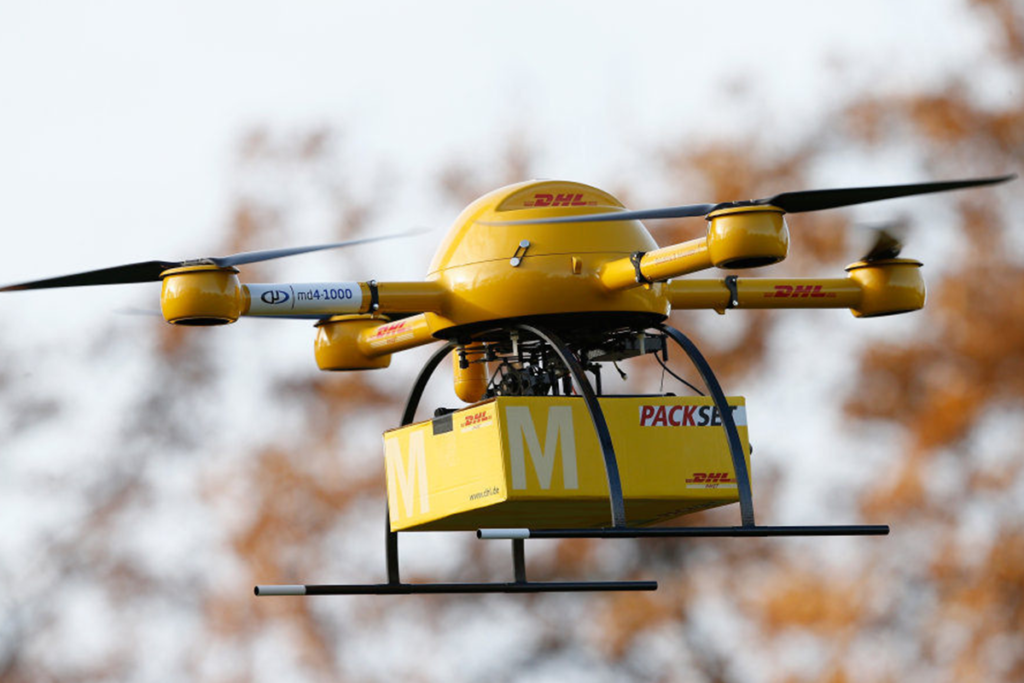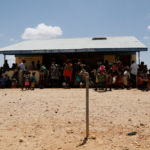Unmanned aerial vehicles (UAVs) – commonly called drones – have captured the imagination of all who know the challenges of last-mile delivery. Proponents argue that they’ll make delivery faster, cheaper and safer. Being able to transport critical supplies to remote areas faster and for less cost without sacrificing quality is the Holy Grail of many development programs. Yet, there is very little evidence demonstrating whether UAVs live up to the hype of faster, cheaper and safer. Moreover, can they do it without sacrificing quality?
Many UAV flights have been conducted, but very few have shared details about how these projects were implemented, what they cost, how they would integrate with the health system, what impact they are having on outcomes, or what lessons have been learned. Without this information, how will decision makers know if they’re likely to be useful or not? Below I describe some of the delivery UAV research already available that I think is useful for decision makers right now.
Are UAVs faster?
We all know that the shortest distance between two points is a straight line and because UAVs don’t have to follow road networks, they likely have a shorter path than traditional means of transport. Two studies have investigated transport times using UAVs compared to ground transport – both from developed countries and both regarding response time for getting automatic external defibrillators (AEDs) to people in cardiac arrest. AEDs are simple to use machines that can save lives when used within 20 minutes of a heart attack. The sooner they are used, the better the survival rate. Both studies investigated where to place AED-equipped UAVs in order to maximize the number of people reached within minutes of a heart attack.
Combining data on demographics, cardiac event incidence, geography, emergency response infrastructure and travel time, Pulver et al. (2016; gated) ran geographic models to identify potential UAV launch sites. They then used optimization models to maximize reach. They found that by placing an AED-equipped UAV at every emergency medical services location in Salt Lake City, Utah, they could improve their 1-minute response reach twenty-fold.
In Stockholm, Claesson et al. (2016) used spatial analysis to identify ideal UAV placement and then ran simulation models to test how response time varied between UAV and road transport. They did this for rural and urban areas and results differed by geography. In their models for rural areas, using a UAV to deliver an AED shaved an astonishing 19 minutes off their cardiac emergency response time. In urban areas, UAV delivery was modeled at 1.5 minutes faster than road transport.
Are UAVs cheaper?
UAVs come in an amazing variety of sizes, with varying capabilities and all this results in a wide range of cost. It is very hard to answer the question of “How much will it cost?” until the specific needs of a delivery project are described in detail. Furthermore, cost is a function not only of the actual UAV itself, but also the system required to operate it according to your project’s needs. Lastly, to know if UAVs are cheaper than alternatives, it is important to know not only actual costs of the system, but cost-effectiveness, which incorporates how much bang one is getting for each buck.
In 2016, Haidari et al. published a research paper on the cost-effectiveness of using UAVs versus using traditional transport networks to deliver vaccines in Mozambique. Using the HERMES (Highly Extensible Resource for Modeling Event-driven Supply Chains) software they modeled the difference in cost and vaccine availability between transporting vaccines within Gaza Province, Mozambique, under current (traditional) transport conditions and using a UAV that could carry 1.5 liters over 75 kilometers in one battery charge. Their model accounted for vaccine demand, operational costs and labor. Then, to better understand the factors related to cost savings, Haidari et al. performed several simulations altering the type of UAV (payload, cost, maintenance), road speed and condition, birth rates, types of vaccinations transported, population distribution, and flight distance. They found that vaccination coverage increased and costs were reduced by using the UAV compared to using traditional transport methods; however, this finding was very site specific. The size of the population requiring vaccination, flight distance and road quality were the primary factors impacting cost savings.
Are UAVs safer?
One of the main goals for developing UAVs was to save the life of aircraft pilots. In the context of UAV delivery for development, use of UAVs has the potential to save the lives of drivers. Road traffic accidents are the leading cause of death for youth globally and 90% of road traffic deaths occur in low- or middle-income countries (WHO, 2015). If the use of UAVs reduced road traffic and the rates of road traffic accidents, it would be a powerful argument to their use. However, while eliminating the chance of pilot injury, UAVs carry different risks for injury. UAVs can crash into other objects in the air, drop objects from high altitude, or fall to the ground – potentially harming people, property or wildlife.
I haven’t found any scientific research articles looking at the relative risk of injury due to crashing if a UAV is used versus an automobile. One likely reason for this is that data on the frequency of UAV crashes is very hard to find and those data will depend on the UAV being used. But only one UAV delivery project has published information on the number and cause of the crashes they’ve experienced. WeRobotics (2017), in collaboration with the Peruvian Ministry of Health and Beckton, Dickinson and Company (BD) recently published a detailed report of their delivery flights in the Amazon. They include a section on technical failures, including a description of what went wrong, why, and how they fixed the problem. Furthermore, they report that 93% of their attempted flights were successful. This type of information is a significant first step to understanding the relative safety of UAV delivery compared to alternatives.
Can they do it without sacrificing quality?
Even if UAVs are faster, cheaper and safer than the alternative, the goods being transported need to arrive in good condition. If you fly laboratory samples, vaccines or live mosquitoes in a UAV, are they still viable when they arrive? Ensuring that sample quality can be maintained during flights is essential for successful program implementation.
Amukele et al. (2015) tested the accuracy of 33 clinical tests conducted on blood samples from 55 patients. Each patient contributed two blood samples, one that was transported via UAV and one that was transported via automobile. They used regression analysis to compare means between transportation type and checked that all samples remained within 95% agreement of one another. They found that the accuracy of the tests was unaffected by UAV transport, although precision was slightly lower with a few tests.
Next steps
These initial studies provide useful information for understanding when UAV delivery of medical goods makes sense, but many questions remain. Decision makers need more evidence. Here are some ideas of outstanding questions:
- Can the efficiencies proven in theoretical models be achieved when implemented on the ground?
- How do cost and effectiveness results translate to different geographies, different supplies, and different UAV technologies?
- What preparations do health systems need to make for the increased speed of UAV delivery?
- What are the parameters for successful flight and how can those be documented?
- How do altitude, speed, temperature, weather, packaging, and time impact the samples transported via UAV?
The United States Agency for International Development (USAID) recently published a report calling for investment in evidence and coordination surrounding UAV technology. FHI 360 agrees and is investing in research on the use of UAVs to deliver goods related to health and nutrition. Stay tuned!
Photo credit: DHL/Sam Churchill, 2014


